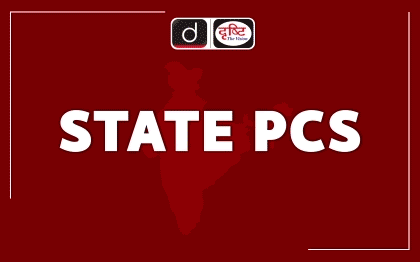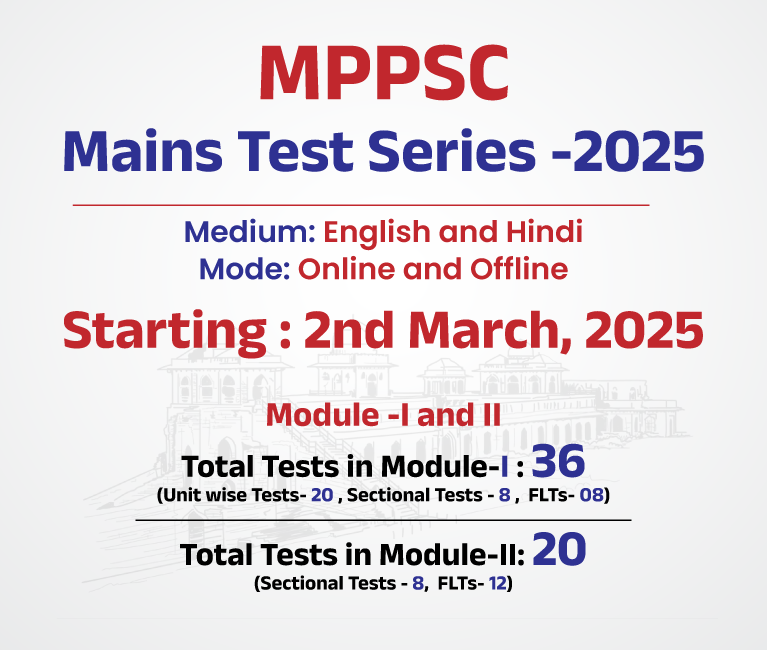Madhya Pradesh Switch to Hindi
Tiger Reserve Buffer Zone Development Scheme
Why in News?
The Madhya Pradesh government has given in-principle approval of Rs 145 crore for the new scheme " Development of Buffer Areas of Tiger Reserves" for the financial years 2025-26 to 2027-28.
Key Points
- About the Scheme:
- This scheme will be implemented in the buffer areas adjoining the 9 tiger reserves of the state.
- It aims to reduce human-wildlife conflict and promote environmental sustainability while ensuring the safety of tigers and other wild animals.
- The following works will be undertaken under the scheme:
- Chainlink fencing will be constructed in sensitive areas to prevent human-wildlife conflict.
- Necessary steps will be taken for the protection of wild animals and fire safety
- Pastures and water sources will be developed so that natural resources are available to animals.
- Arrangements will be made for treatment and health check-up of wild animals so that the spread of diseases can be prevented.
- The skills of the local citizens will be upgraded by providing them training so that alternative means of livelihood can be created for them .
- In the last 4 years, the number of tigers in the state has increased from 526 to 785 , which is a major achievement in the field of wildlife conservation.
Tiger Reserves of Madhya Pradesh:
|
S.No. |
Tiger Reserve |
Tiger Reserve Notification Year |
Location (District) |
|
1. |
Kanha Tiger Reserve |
2007 |
Mandla & Balaghat |
|
2. |
Pench Tiger Reserve |
2007 |
Seoni |
|
3. |
Bandhavgarh Tiger Reserve |
2007 |
Umaria |
|
4. |
Satpura Tiger Reserve |
2007 |
Narmadapuram |
|
5. |
Panna Tiger Reserve |
2007 |
Panna |
|
6. |
Sanjay-Dubri Tiger Reserve |
2011 |
Sidhi |
|
7. |
Veerangana Durgavati Tiger Reserve |
2023 |
Damoh & Sagar |
|
8. |
Ratapani Tiger Reserve |
2024 |
Raisen & Sehore |
|
9. |
Madhav Tiger Reserve |
2025 |
Shivpuri |


Madhya Pradesh Switch to Hindi
OBC Reservation in MP
Why in News?
A hearing was held in the Supreme Court on the issue of providing 27% reservation to Other Backward Classes (OBC) in Madhya Pradesh.
Key Points
- OBC Reservation Status :
- OBCs get 27% reservation in central government jobs and educational institutions
- In 1953, the Kalelkar Commission was set up, which brought the first instance of recognition of backward classes beyond Scheduled Castes (SC) and Scheduled Tribes (ST) at the national level.
- In 1980, the Mandal Commission report estimated the OBC population at 52% and identified 1,257 communities as backward classes.
- To remove the inequality, it suggested increasing the existing quota (earlier applicable only to SC/STs) from 22.5% to 49.5%, with reservation expanded to include OBCs.
- Following these recommendations, the Central Government implemented the reservation policy under Article 16(4), reserving 27% of seats in the Central Civil Services for OBCs.
- The policy was also extended to Central Government educational institutions under Article 15(4).
- In 2008, the Supreme Court intervened to ensure that these benefits reach the most disadvantaged and directed the Central Government to exclude the “creamy layer” (advanced classes) among OBCs from the benefits of the reservation policy.
- In the year 2018, the 102nd Constitutional Amendment Act provided constitutional status to the National Commission for Backward Classes (NCBC)
- It elevated the NCBC from its previous status as a statutory body under the Ministry of Social Justice and Empowerment , giving it greater power and recognition to protect the interests of backward classes, including OBCs.










%20MPPCS%202025%20Desktop%20E.jpg)
%20MPPCS%202025%20Mobile%20E%20(1).jpg)










.png)
.png)











 PCS Parikshan
PCS Parikshan


-min.jpg)